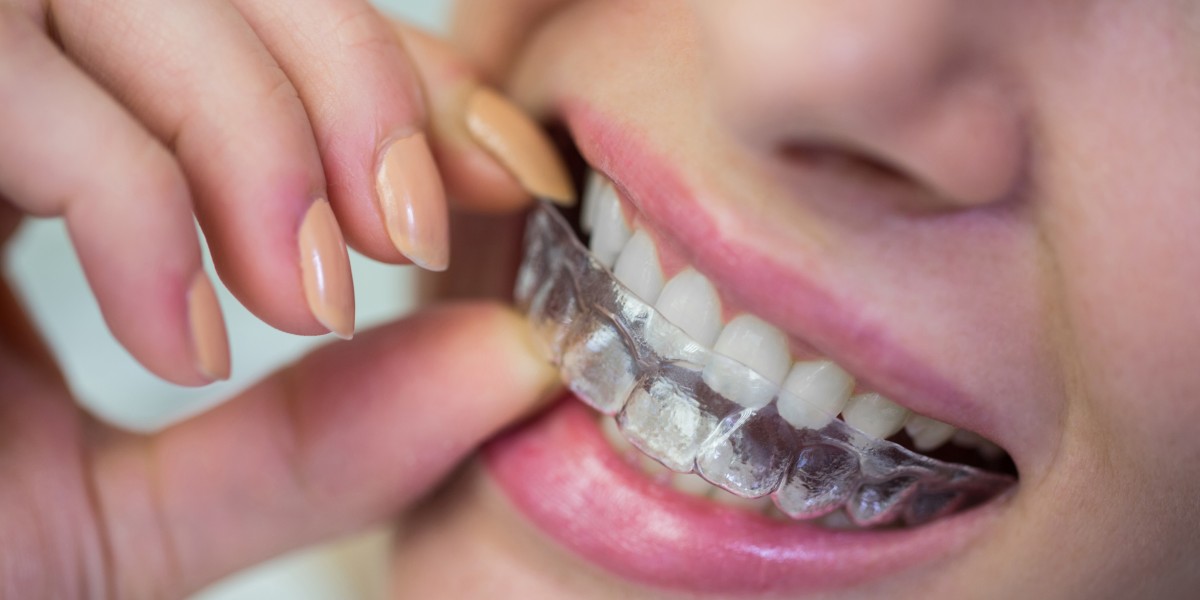Whether it’s for cosmetic reasons or to resolve dental issues such as overcrowding, bite problems, or speech difficulties, teeth straightening has become an increasingly popular treatment among both teens and adults.
Modern dentistry now offers a range of teeth straightening solutions that are more comfortable, discreet, and effective than ever before. This comprehensive guide will explore the various options available, the benefits of straighter teeth, the treatment process, costs, aftercare, and much more.
What Is Teeth Straightening?
Teeth straightening is a form of orthodontic treatment aimed at aligning and repositioning teeth that are crooked, crowded, or spaced too far apart. The goal is to achieve a more uniform, functional, and aesthetically pleasing dental alignment.
Orthodontic techniques work by applying gentle, consistent pressure on the teeth over a period of time to move them into their correct positions.
Common Reasons for Teeth Straightening
Patients seek teeth straightening for various reasons, including:
Crooked or overlapping teeth
Crowded teeth
Gaps between teeth
Overbite, underbite, or crossbite
Speech impediments caused by poor alignment
Jaw pain or difficulty chewing
Cosmetic dissatisfaction with one’s smile
Straightening the teeth not only enhances appearance but also improves oral hygiene and long-term dental health.
Benefits of Straight Teeth
Straight teeth contribute to more than just an attractive smile—they offer a wide range of health and functional benefits:
1. Easier Oral Hygiene
Misaligned teeth can be difficult to clean, increasing the risk of decay and gum disease. Straighter teeth are easier to brush and floss effectively.
2. Improved Bite Function
Correct alignment ensures the upper and lower teeth fit together properly, reducing strain on the jaw and preventing issues like TMJ (temporomandibular joint) disorder.
3. Better Speech
Certain misalignments can affect pronunciation. Teeth straightening can help improve clarity of speech.
4. Enhanced Confidence
A straighter smile can boost self-esteem in social, personal, and professional settings.
5. Reduced Wear and Tear
Misaligned teeth often cause uneven wear on enamel. Straightening can help preserve your teeth for the long term.
Types of Teeth Straightening Treatments
Thanks to advancements in dental technology, there is now a wide variety of teeth straightening options available to suit different needs, budgets, and lifestyles.
1. Metal Braces
Traditional fixed braces use metal brackets and wires to gradually move teeth into alignment.
Pros:
Highly effective for complex issues
Precise tooth movement
Suitable for all age groups
Cons:
Highly visible
May cause discomfort or irritation
Require regular adjustments
Typical treatment time: 18 to 36 months
2. Ceramic Braces
These work like metal braces but use tooth-coloured or clear brackets for a more discreet appearance.
Pros:
Less noticeable than metal braces
Effective for moderate to complex cases
Cons:
More fragile than metal brackets
Can be more expensive
May stain without proper care
Treatment time: 18 to 36 months
3. Lingual Braces
Lingual braces are similar to traditional braces but are fitted to the back of the teeth (the tongue side), making them invisible from the front.
Pros:
Completely hidden from view
Suitable for complex alignment issues
Cons:
More expensive
May affect speech initially
Harder to clean
Treatment time: 18 to 36 months
4. Invisalign (Clear Aligners)
Invisalign and similar systems use a series of custom-made, removable clear aligners that gradually shift teeth into place.
Pros:
Virtually invisible
Removable for eating and brushing
Comfortable and smooth
Cons:
Not suitable for very complex cases
Requires discipline to wear 20–22 hours per day
More expensive than traditional braces
Treatment time: 6 to 18 months, depending on the case
5. Self-Ligating Braces
These are similar to metal braces but use a special clip instead of elastic bands to hold the wire in place, reducing friction and potentially shortening treatment time.
Teeth Straightening for Adults
Teeth straightening is not just for children or teenagers. Increasingly, adults are choosing orthodontic treatment for both cosmetic and health reasons.
Adult-Oriented Options Include:
Invisalign
Ceramic braces
Lingual braces
Clear aligner systems like ClearCorrect or Spark
Many adults prefer more discreet options that fit into professional and social lifestyles. With proper planning, adult orthodontics can be highly effective, even for complex issues.
The Treatment Process: What to Expect
1. Initial Consultation
Full dental examination and X-rays
Discussion of concerns, goals, and available options
Custom treatment plan prepared
2. Fitting or Aligners
For braces: brackets are bonded, wires added
For aligners: impressions or 3D scans taken and aligners are created
3. Adjustments or Check-ups
Braces: monthly visits for wire tightening
Aligners: new trays every 1–2 weeks, with check-ups every 6–8 weeks
4. Completion and Retention
Once teeth are straightened, braces or aligners are removed
Retainers are provided to maintain results
Retainers: Why They Matter
After any teeth straightening treatment, a retainer is essential to maintain the new position of your teeth.
Types of Retainers:
Fixed retainers: Thin wire bonded behind the front teeth
Removable retainers: Clear plastic retainers worn overnight
Failing to wear a retainer as advised can result in orthodontic relapse, where teeth slowly shift back to their original position.
Cost of Teeth Straightening in the UK
The cost varies depending on the type of treatment, complexity, and the dental practice you choose.
| Treatment Type | Cost Range (UK) |
|---|---|
| Metal Braces | £1,500 – £3,000 |
| Ceramic Braces | £2,000 – £4,500 |
| Lingual Braces | £3,000 – £8,000 |
| Invisalign/Clear Aligners | £2,000 – £5,500 |
| Retainers (Post-Treatment) | £100 – £400 each |
Some practices offer 0% finance plans, payment instalments, or smile packages for affordability.
NHS vs. Private Treatment
In the UK, children under 18 may qualify for NHS orthodontic treatment if their case meets the required severity under the Index of Orthodontic Treatment Need (IOTN). However, waiting lists can be long, and options are usually limited to metal braces.
Private treatment offers:
Faster access
More discreet and advanced options
Personalised treatment plans
Many adults choose private treatment due to NHS limitations.
Risks and Considerations
Like any medical procedure, orthodontic treatment comes with potential risks:
Initial discomfort or soreness
Risk of tooth decay if oral hygiene is poor
White spots on teeth if cleaning is neglected
Short-term speech changes with certain braces
Potential relapse without retainers
Choosing a qualified and experienced orthodontist can minimise these risks and ensure the best outcome.
Caring for Teeth During Treatment
Maintaining excellent oral hygiene is crucial while undergoing any teeth straightening procedure.
Tips for Care:
Brush teeth twice daily with fluoride toothpaste
Use interdental brushes or floss daily
Rinse with mouthwash to prevent plaque buildup
Avoid sugary foods and drinks
Attend regular dental check-ups and cleanings
For fixed braces, your dentist may recommend specialised cleaning tools like a water flosser or orthodontic brush.
Frequently Asked Questions (FAQs)
1. At what age should teeth straightening begin?
Ideally, between ages 10–14 while the jaw is still growing. However, adult treatment is equally effective with modern techniques.
2. Is teeth straightening painful?
You may experience mild discomfort or pressure, especially after adjustments. This usually subsides within a few days.
3. Can I eat normally with braces or aligners?
With braces, avoid hard, sticky foods. Aligners are removable, so you can eat freely—but always remove them before meals.
4. How long does treatment take?
Treatment time varies depending on complexity but usually ranges from 6 to 24 months.
5. Will I need to wear retainers forever?
Retainers are essential long-term. Most patients wear them nightly for several years or indefinitely to prevent relapse.
Final Thoughts
Teeth straightening is a powerful investment in both your appearance and oral health. With so many modern, discreet, and effective options available, achieving a straighter smile is now easier than ever—regardless of your age.
Whether you choose traditional braces, ceramic alternatives, or clear aligners like Invisalign, the key to success lies in choosing a skilled orthodontic provider, maintaining good oral hygiene, and following your aftercare plan.








